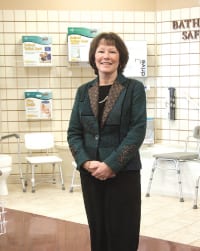Shifting Gears – How to Talk to Older Family Members About Driver Safety
Every December, during Older Driver Safety Awareness Week, the American Occupational Therapy Assoc. (AOTA) seeks to raise awareness and increase the availability of education about the aging driver’s options.
Family and friends play a major role in discussions about older driver safety, and we are now recognizing the importance of starting these conversations earlier, before a crisis.
“When an older adult is given a traffic ticket or has a minor crash, it may feel like a natural time to discuss safety in driving,” said Mary Jo McGuire, an occupational therapist and professor at Walsh University. “The problem is that this is when an older adult feels he or she must defend the ability to drive, and so the conversation with family members can, unfortunately, become argumentative.”
Many older adults may think about what they can do to remain fit to drive as long as safely possible while silently wondering if a day will come when they might have to stop driving. Early conversations between families and friends can bring up questions that focus on the importance of physical and mental health to preserve essential driving skills, as well as options supporting an engaged life after driving, such as, “how do you think you could get to church if you ever quit driving?”
These conversations are easier when started while an older adult is still a competent driver, when the focus is on preparing. McGuire suggests using current events, such as a news story about a car accident, as an opportunity to explore driver safety. This is also a time to emphasize the initial focus on solutions. Explore interventions and adaptations available to support an older adult in his or her goal to continue driving safely, compensating with guidance from health professionals for physical or cognitive changes. These can be as simple as avoiding the unprotected left turn or not driving at night, or as complex as vehicle adaptations.
Other opportunities for discussing driver safety include making positive comments when transporting an older adult somewhere, such as “it’s nice to spend time with you” or “I’m glad you let me drive today”; creating a positive attitude toward an engaged and active life without dependence on driving responsibilities, such as not having the cost of keeping up a car and paying insurance; and discussing the possibility of limiting when or where the person drives, in order to increase safety.
Another option that occupational-therapy practitioners suggest is that older drivers and their families select a family member or friend to be a ‘driving advocate’ who will commit to ride with the older driver on a regular basis and will voice concerns and give advice. A ‘contract’ between the older driver and selected family member can clarify the commitment to explore all possible services and solutions and make clear the wish to make the safest decision if medically related changes have taken away the essential skills and abilities required to control a vehicle safely. Remember to never have these conversations in the car, and be specific about the unsafe behavior.
“Everyone is different, and the solutions need to be custom-designed for each individual,” said McGuire. “Driving is a critical occupation that we need to understand and analyze. It is one part of the larger issues of community mobility, which is a critical component of being able to live life to its fullest.”



Comments are closed.